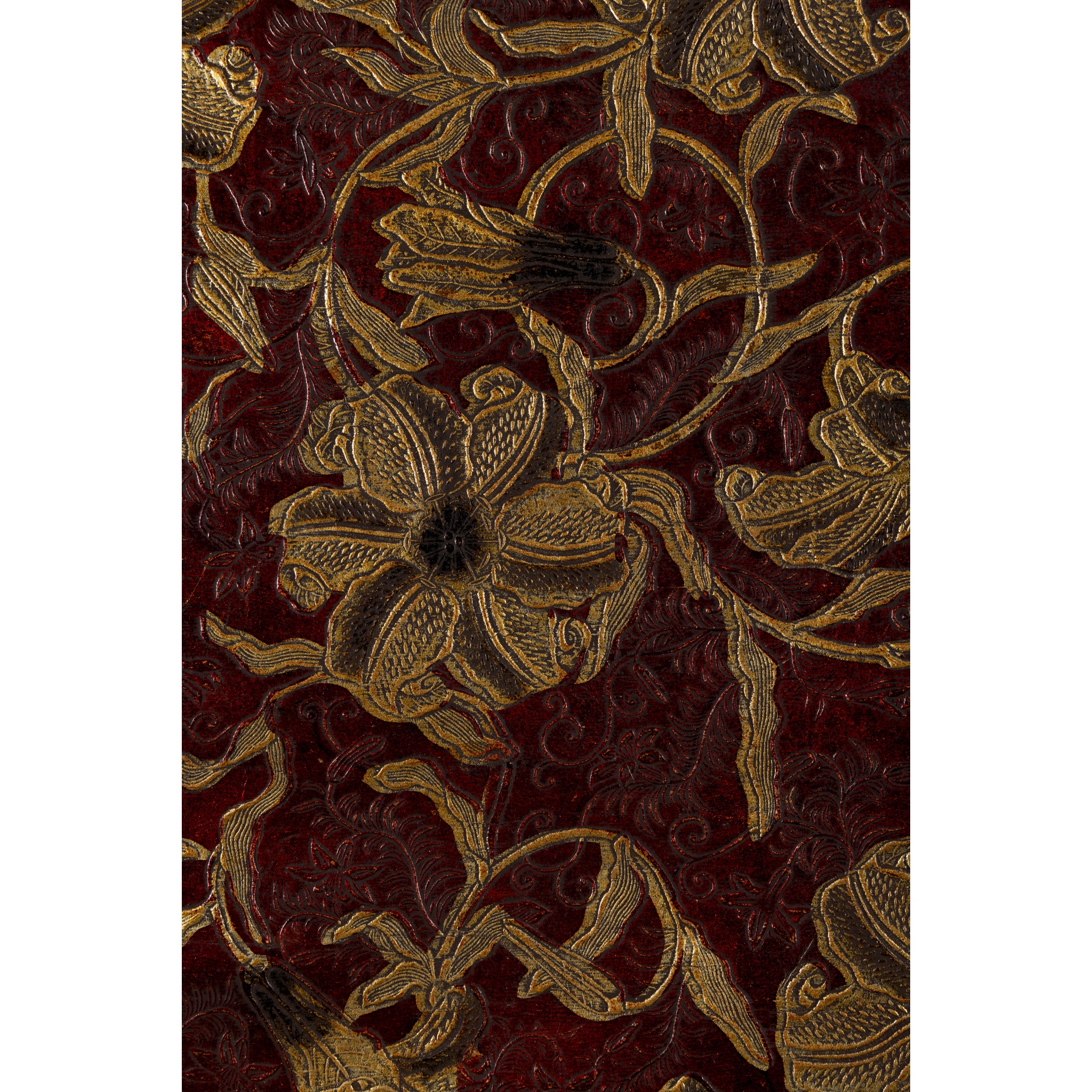LONG SCROLL GILT EMBOSSED LEATHER PAPER, KINKARAKAWAKAMI, BY ROTTMANN STROME AND CO
MEIJI PERIOD, 1884-1890
Fine Asian & Islamic Works of Art
Auction: 3 November 2023 from 09:00 GMT
Description
明治 約1884-1890年 'ロットマン ストロム社'印 金唐革紙 扶桑花紋 一卷
leather, gilt decorated with hibiscus flowers in tendrils, a rectangular label on reverse stamped 'ロットマン ストロム社 (Rottmann Strome and Co.)' with Mount Fuji image
Dimensions
648cm x 88cm
Provenance
Provenance: Private English collection
Footnote
Note: Kinkarakawakami (gilt foreign leather paper) was the Japanese name for gold embossed leather paper. Embossed leather kinkarakawa (gilt foreign leather) was introduced to Japan by Dutch traders in the seventeenth century and the fashion for tobacco pouches and other personal effects grew amongst the Samuri class. This led to a widespread interest in this luxury product. Japanese craftspeople began to experiment, recreating the leather effect on paper. This also allowed the items to be used in temples as it was vegetarian. It wasn’t until the Meiji Restoration period (1868-1912) that the technique was perfected and exported. It was popular as a wall covering in Western-style houses in Japan, but as an exported product it led to the establishment of a prosperous industry that was overseen by the Japanese government. One company that had a lucrative contract to export these products was Rottmann Strome and Co., a well-known British company who were contractually aligned with the Japanese Government from 1884 to 1890.
By the 1880s Japanese leather wallpapers displaying international designs were finding an assured market in the West. Historians credit Alexander Rottmann with its growth. He began by engaging Japanese artisans in small shops and ended by establishing a large enterprise under the auspices of the Japanese government. At the Imperial Printing Works in Yokohama, where bank notes, primers and state documents were printed, Rottmann gained the assistance of government officials in setting up a section for the manufacture of embossed leather hangings in styles and in a format (rolls) suited to the Western market. He organized the house of Rottmann, Strome and Co., Yokohama and London, in 1883 with exclusive rights to export leathers. Some displayed Japanese elements of design, others imitated Renaissance leathers. A number were designed by well-known British artists such as Arthur Silver and Harry Napper. As Western demand increased the government opened a Tokyo factory. About 1890 both operations were relinquished by the government and purchased by Rottmann, Strome and Kobayishi Beiki as the Yamaji Hekishi Shawan Paper Co.[1]
Rottmann's papers were "non-arsenical, damp-proof, washable . . . more durable than any other material of a similar character."[2] In 1884 the company obtained a gold medal at the London International Health Exhibition and in 1885 a silver medal at the Antwerp Exhibition.[3] The firm's 1886 statement that it was the "original manufacturer of the highly embossed Japanese Wall Hangings which require no after treatment."[4]
[1] Leung, Felicity L. 1988. “Japanese Wallpaper in Canada, 1880s-1930s”. Material Culture Review 28 (June).
[2] The Decorator and Furnisher, September 1885, p. 189.
[3] Sugden and Edmondson, History of English Wallpaper, p. 227
[4] The Decorator and Furnisher, May 1886.

